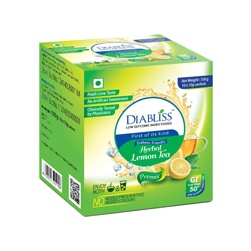Practical Use of the Glycemic Index [ GI ]
Glycemic Index is a vital benchmark for diabetics. It is a balance that ascertains whether the food diabetics consume is healthy or harmful. By monitoring the glycemic index, diabetics can control the disease, and live a full, healthy life.
Glycemic Index is defined as a scale that ranks carbohydrates by how much they raise blood glucose levels compared to a reference food. It is grouped in the following categories:
- Low (0 – 55)
- Moderate (56 – 69)
- High (70 or more)
Diabetics are advised to eat food that has either a low or moderate GI. High GI food may be consumed occasionally when it is balanced with low or moderate GI food. It is best to consult a physician or nutritionist to craft a diet plan where certain high GI foods can be accommodated.
Calculation of Glycemic Index
To calculate GI, subjects are given 25 or 50 grams of test food. Their blood samples are taken as per the schedule given below:
- 1st hour: every 15 minutes
- 2nd hour: every 30 minutes
- 3rd hour: every 30 minutes
Resulting values are plotted on a graph and AUC (area under the curve) is calculated. On a separate occasion, the same subjects are given an equal carbohydrate portion of a reference food and their two-hour blood glucose response is also measured. A GI value for the test food is then calculated for each person by dividing their glucose AUC for the test food by their glucose AUC for the reference food.
Glycemic Index – Sample Graph
Factors Influencing GI Ranking
There are various factors that affect the action of consumed food on blood glucose levels thereby influencing its GI ranking. These factors are given below:
- Type of Starch
|
|
Starches, also known as complex carbohydrates, are long chains of sugar glucose joined together. Amylose and amylopectin are two types of starch found in food. They can be compared as follows:
- Physical Entrapment
Bran is a fibre-rich coating packed with vitamins that remains intact in whole grains, but removed in polished ones. It acts as a physical barrier that slows down enzymatic activity on the internal starch layer. This process leads to low GI levels while removing bran has the opposite effect. For e.g., Bagel (72) is high GI while All-Bran (38) is low.
- Viscosity of Fiber
Viscous, soluble fibers transform intestinal contents into gel-like matter that slows down enzymatic activity on starch. As food is digested slowly it doesn’t lead to a rapid spike in blood glucose levels. Hence high amounts of soluble fibre lead to low GI. For e.g., Apples have higher soluble fibre hence they’re low in GI.
- Sugar Content
High sugar food has a higher GI because sugar is very similar to glucose and is absorbed rapidly in the blood stream. That’s why diabetics are advised to adopt a diet low on sugar. When compared to Rice Krispies, Frosted Flakes have less sugar and rank lower on GI.
- Fat & Protein Content
Fat and protein slow down gastric emptying, and lower rate of digestion of starch. Protein and fat is absorbed slower than carbohydrates hence blood sugar is reduced. The higher the fat or protein content of food, the lower will be its GI. This is the reason why Peanut M&Ms are lower in GI than potato chips.
- Acid Content
Acid content slows down digestion of starch as a result of the slowdown of gastric emptying. As digestion is slower in this case, the resulting blood glucose is also lesser in comparison. Thus sourdough wheat bread, which has high acid content, has a GI of 54 where as white bread is 73.
- Food Processing
Highly processed foods are high in GI as compared to natural, whole foods. The former require less digestive processing in comparison to the latter and boost blood glucose levels due to quick absorption. For e.g., Quick 1- minute oats (66) and old fashioned, rolled oats (51).
- Cooking
Cooking swells starch molecules and softens food. This drives up the rate of digestion giving rise to higher levels of blood glucose. When spaghetti is cooked al dente (boiled 10 min) its GI is 44, but when cooked for longer the GI increases to 64.
GI Load
Glycemic load measures the degree of glycemic response and insulin demand produced by a specific amount of a specific food. Glycemic load reflects both the quality and quantity of dietary carbohydrates.
GL = GI/100 x CHO (grams) per serving
E.g., GL of an apple = 40/100 x 15g = 6g
Similar to glycemic index, glycemic load is also classified into three groups as seen below:
Individual food portion
- Low (0-10)
- Moderate (11-19)
- High (20+)
All food portions for a day
- Low (< 80)
- Moderate (100)
- High (> 120)
Glycemic Load and Glycemic Index Comparison
Glycemic index ranks carbohydrates based on their immediate blood glucose response. Glycemic load helps predict blood glucose response to specific amount of specific carbohydrate food.
GI = glycemic quality
GI = glycemic quality & glycemic quantity
Benefits of Low GI Diets
Low GI diets have many proven benefits not just for diabetics, but for non-diabetics as well. Some of the documented benefits of low GI diets are stated below:
- Helps lower blood glucose levels
- Aids in weight control
- Decreases risk of diabetes
Adopting a Low GI Diet
Here are a few ways in which one can adopt a low GI diet:
- Balance calories in with calories out
- Eat balanced diet with variety of nutrient-dense foods and beverages
- Consume 2 cups fruit, 2½ cups vegetables per day (2,000 calories intake)
- Choose whole grains for at least half of daily grain consumption
- Consume 3 cups fat-free/low-fat milk
- Keep fat consumption 20-35% of daily calories (mono & polyunsaturated)
- Consume less than 2300 mg sodium/day
- Choose foods with little added sugar
- Drink alcohol in moderation
- Practice food safety handling and preparing rules
While adopting a low GI diet, the focus shouldn’t exclusively be on achieving a low glycemic load with all low glycemic index food choices. The results would lead to high fat, low carbohydrate, low fibre and calorically dense meals. Instead one should aim for a well-balanced diet that includes low glycemic index carbohydrates while using glycemic load as a guide for controlling portions. Low GI diet allows for larger portions, while regulating the GL, but high GI diet requires smaller portions to regulate the GL.
Examples of Low GI Meals
Low GI meals can help individuals get abundant nutrition, control their weight and keep diabetes at bay. Many have shed their excessive body mass with a low GI diet and regular exercise. Continuing on the low GI path will also help in weight management. Given below are a few examples of low GI meals:
- Eat high-fibre breakfast cereals (oats, bran, barley), or add berries, nuts, flaxseed and cinnamon to high GI cereals
- Choose dense, whole grain and sourdough breads and crackers, or add a heart-healthy protein and/or condiment to high GI breads and crackers
- Replace white potatoes with yams or sweet potatoes, or try canned new potatoes, or just eat smaller portions of high GI potatoes
- Eat less refined sugars and convenience foods (soda, sweets, desserts, etc.)
- Combine nuts, fruit, yogurt, ice cream with commercial sweets and watch portion sizes most importantly
Take Away
At the end of the day, people have to make self-directed, informed decisions about personal behavioral changes. By practicing a healthy lifestyle, which includes a mix of low GI diet and daily exercise, good health and vitality is achievable for everyone.





